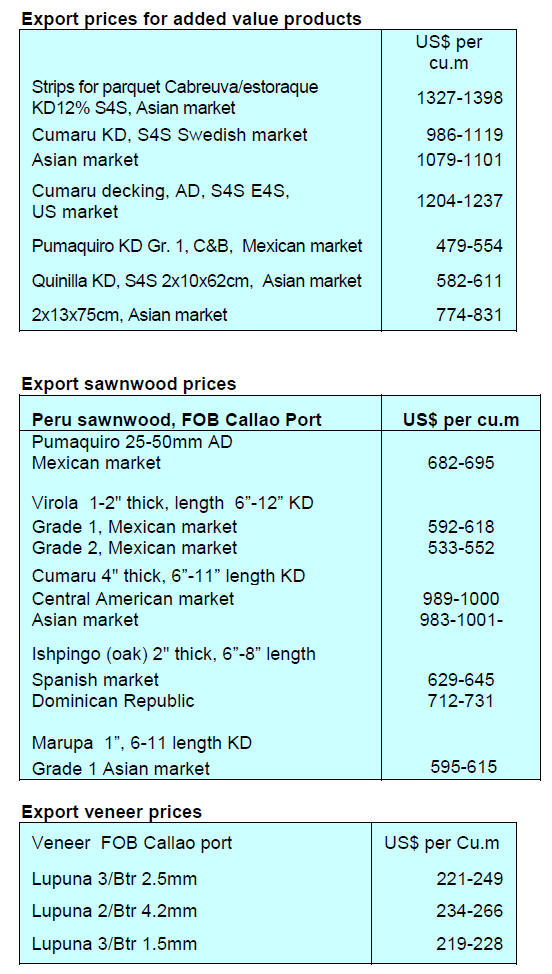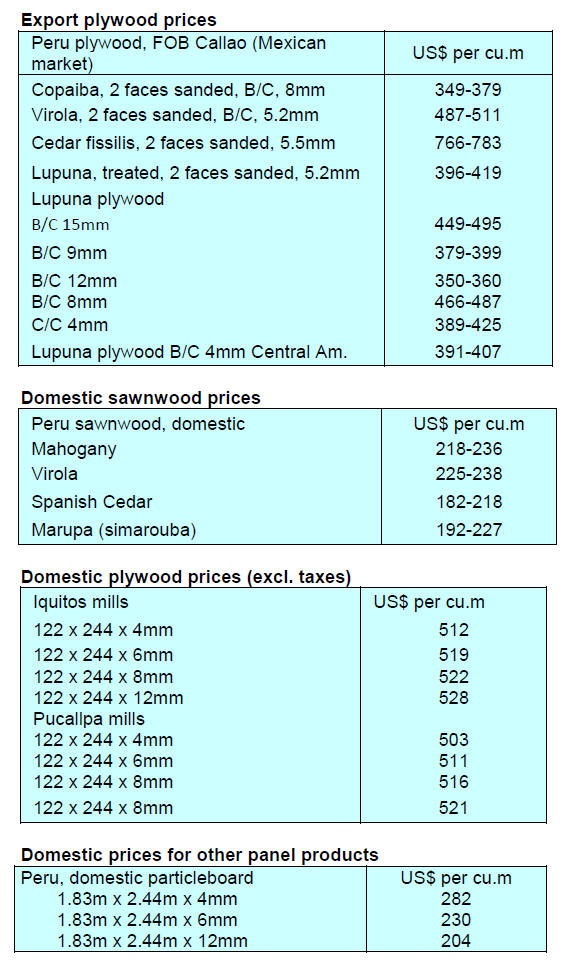4.
INDONESIA
Contribution from forestry to GDP can
be increased
The Minister for the Economy, Airlangga Hartarto, has stated that
the forestry sector's contribution to GDP at 0.66% in 2022 should be
increased and the carbon trade may offer opportunities. He added that
Indonesia’s forestry development policies are aimed at maximising benefits
for people while maintaining forest functions.
He said the government continues to implement its Social Forestry policy
that opens up opportunities for communities living around the forest to
apply for forest area management rights.
In related news, Airlangga met with German Minister for Economic Affairs and
Climate Action, Robert Habeck, to discuss a ‘green economy’ sector.
Airlangga said Indonesia and Germany had sealed business agreements in
various sectors such as energy transition, downstream industries and
accelerating the completion of the Indonesia-EU Comprehensive Economic
Partnership Agreement (IEU-CEPA) especially related to flexibility in
sustainability issues.
One of the issues discussed with Minister Habeck was related to the European
Union's deforestation regulation.
According to Airlangga this will make it more difficult for Indonesia to
export commodities such as palm oil, cocoa, coffee and timber to the EU.
Airlangga asked Germany to help encourage cooperation in recognising
standards that have been implemented in Indonesia.
In terms of industrial downistreaming, especially mining, Airlangga
emphasised that Indonesia is open to foreign investment in order to increase
added value.
See:
https://en.antaranews.com/news/278475/contribution-from-forestry-sector-to-gdp-can-be-increased-minister
and
https://www.msn.com/id-id/ekonomi/ekonomi/menko-airlangga-temui-menteri-iklim-jerman-bahas-aturan-deforestasi-ue/ar-AA19ZCDF#image=1
Philippines and Indonesia partnership on reforestation
Indonesia and the Philippines are working on a bilateral
partnership for a major reforestation project which may catalyze net zero
and carbon market development in the ASEAN region.
Indonesian Chamber of Commerce and Industry (Kadin) chairman and ASEAN-BAC
2023 chairman, Arsjad Rasjid, said the reforestation partnership was among
the projects being pushed by the ASEAN Business Advisory Council (ASEAN-BAC)
this year.
Indonesia has 91.2 million hectares of forest while the Philippines has 23.3
million hectares. With the growing demand for carbon credits globally the
reforestation partnership presents an opportunity for both countries.
See:
https://dinsights.katadata.co.id/read/2023/04/13/indonesia-philippines-work-on-large-scale-reforestation-project
Exports topped US$23 bil. in March
The value of Indonesia's exports in March 2023 reached US$23.50
billion, up 10% month-on-month according to Statistics Indonesia (BPS).
At a press conference Deputy for Methodology and Statistical Information at
BPS, Imam Machdi, reported that in each of the past three years
month-to-month export growth in March has always increased. However, the
increase in March this year was not as high as in 2022 and 2021. The growth
in March was supported by an increase in the exports of raw minerals as well
as the iron and steel industry.
See:
https://swa.co.id/swa/trends/economic-issues/ekspor-indonesia-maret-2023-capai-us2350-miliar
Economic growth below 5% in first quarter
The Executive Director of the Center of Reform on Economics (CORE)
Indonesia, Mohammad Faisal, forecast that Indonesia's economy will record
less than 5% growth in the first quarter of 2023.
According to CORE the projected growth will be supported by household
consumption and investment. Household consumption is estimated to still
account for half of the economic growth while investment is projected to
contribute more to economic growth this year.
See:
https://en.antaranews.com/news/278559/see-economic-growth-dipping-below-5-in-q1-core
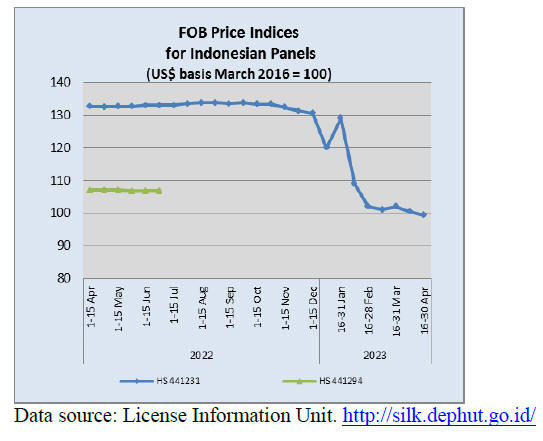
Through the eyes of industry
The latest GTI report lists the challenges identified by the
private sector in Indonesia.
See:
https://www.itto-ggsc.org/static/upload/file/20230414/1681442042214477.pdf
5.
MYANMAR
Efforts to de-escalate violence
24 April marked the second anniversary since ASEAN agreed on a Five
Point Consensus in response to the military coup in Myanmar, sadly the
Myanmar military has ignored this opportunity for peace in the country.
Amnesty International has assessed ASEAN’s five point consensus and its
conclusions have been published;
“Myanmar: ASEAN needs to address its failing approach to the crisis in
Myanmar following the military coup”
In relate news, the Bangkok Post has reported that government
representatives from Myanmar and its neighbours met recently in New Delhi in
an effort de-escalate the violence in the country. The New Delhi talks were
a follow-up to an earlier meeting held in Thailand, the so-called Track 1.5
dialogue.
See:
https://reliefweb.int/report/myanmar/myanmar-asean-needs-address-its-failing-approach-crisis-myanmar-following-military-coup
and
See:
https://www.bangkokpost.com/world/2557711/secretive-talks-on-myanmar-held-in-india
Power supply a challenge
Prime Minister, General Min Aung Hlaing, has been reported as
saying that securing an adequate electricity supply is a major challenge
An editorial in the state run newspaper lays the blame on those who have
destroyed power plants and power lines. All sectors, including the timber
industries are facing a serious power shortage and operating generators for
industial production is far too expensive.
Most of the industries in Yangon area are supplied only four hours in a day.
The residential areas in Yangon are faced with interrupted power supplies
sometimes for eight to twelve hours daily.
The long term power issue in Myanmar has now become problematic as the
Swedish/Finnish engineering services supplier AFRY has withdrawn from
Myanmar’s hydropower projects. AFRY was working on 13 hydropower projects.
See:
https://www.irrawaddy.com/news/burma/european-dam-specialists-withdraw-from-myanmar-amid-rights-concerns.html
Trade deficit
According to the Ministry of Economy and Commerce the trade deficit
was over US$774 million at the end of the fiscal year despite the target of
having a trade surplus of US$1,500 million dollars in the 2022-2023 fiscal
year.
In the 2022-2023 fiscal year (April to March) exports were valued at
US$16.575 billion. The value of imports was US$17.349 billion. Myanmar
exports agricultural products, animal products, fishery products, mining
equipment, forest products and industrial goods.
6.
INDIA
Surge in Covid infections
India recorded over 18,450 new Covid cases in the period 26 March
to 1 April, a doubling of the number in the previous seven days and the
number of cases continues to rise. A new variant of Covid-19 named “Arcturus”
is said to be behind the surge of infections. But an Omicron sub-variant
strain is on the verge of devastating the country as cases have soared
13-fold in the last month.
India's health ministry launched drills this week in an attempt to see if
hospitals are prepared to deal with a possible influx of patients following
the rise in cases.
See:https://www.independent.co.uk/news/health/arcturus-new-covid-variant-india-uk-b2319005.html
Timber price indices trend up
The annual rate of inflation based on all India Wholesale Price
Index (WPI) in March was 1.34% compared to 3.85% recorded in February 2023.
The decline in the rate of inflation in March was due to a fall in prices of
basic metals, food products, textiles, non-food articles, minerals, rubber
and plastic products, crude petroleum and natural gas and paper and paper
products.
Out of the 22 NIC two-digit groups for manufactured products 12 groups saw
increased prices while 9 saw a decline and one group remained unchanged.
The increase in prices was mainly contributed by machinery and equipment,
other transport equipment, leather and related products, electrical
equipment; fabricated metal products and other manufacturing.
The indices for wood panels, sawnwood and veneer sheets all rose in March.
See:
https://eaindustry.nic.in/pdf_files/cmonthly.pdf
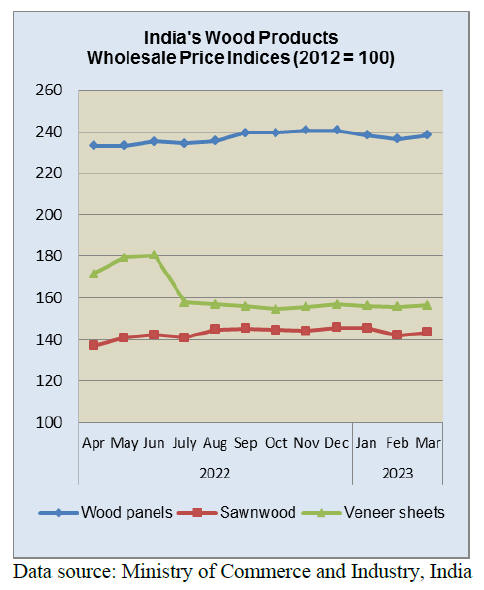
Growing demand for US hardwoods
US hardwood exports to India were at an all-time high in 2022 with
the value of hardwood sawnwood and veneer exports totalling US$8.62 million
according to the American Hardwood Export Council (AHEC).
The value of sawn hardwoods shipped from the US to India increased by 13%
US$6.902 million (up from US$6.120 million in 2021) but were down by around
4% in volume compared to 2021. Direct exports of US hardwood veneers to
India were worth US$ 1.716 million. India has seen a growing demand for US
hardwoods in recent years. AHEC participated at Delhiwood hich included 12
US based sawn hardwood exporters.
The top six American hardwood species exported to India last year were
Hickory (2,581cu.m), White Oak (3,173cu.m), Red Oak (2,334 cu.m), Ash (514
cu.m), Walnut (214 cu.m) and Maple (428 cu.m). Significant increases were
seen in the value and volume of exports of Red Oak, Maple, White Oak and
Walnut.
Roderick Wiles, AHEC Regional Director, is quoted by Miller Wood Trade as
saying “Increasing certification requirements and the restricted and
deteriorating quality of supply of domestic species is driving Indian
furniture manufacturers to look at viable alternative hardwood species not
only for the domestic furniture and interiors market but also for re-exports
of value-added product.“
See:
https://millerwoodtradepub.com/u-s-hardwood-exports-to-india-reach-all-time-high/
Plywood sales steady despite weakening housing market
Despite weakened demand for plywood new construction is sustaining
production by door and film faced shuttering plywood factories. PlyReporter
says demand has improved in all product categories including LVL, H beams,
non-densified and densified plywood.
Since the end of 2022 construction work slowed in many cities with 37
districts in the Indo-Gangetic Plain (IGP) being identified as air pollution
‘hotspots’, including nine districts in Delhi and those of Noida, Gurgaon,
Faridabad and Ghaziabad and there was a considerable drop in orders placed
with plywood manufacturers. PlyReporter says as the air quality has improved
construction work has resumed helping lift demand for plywood.
In other news, PlyReporter has said the 2023 government budget will boost
demand for plywood in the construction sector as plywood has been accepted
for use tier 3 and rural markets as traditional shuttering wood has become
more expensive.
See:
https://www.plyreporter.com/article/123486/booming-real-estate-helping-film-faced-plywood-demand
Urban housing shortage
According to a report from the Ministry of Housing and Urban
Poverty Alleviation (MHUPA), the urban housing shortage in India is
currently estimated at around 19 million. This gap is expected to further
widen to an estimated 38 million homes by 2030, largely due to the rising
population and increased urbanisation.
India built 5.28 million houses through the ural housing scheme in fiscal
2023, up 25% from a year earlier. The country proposes to build 5.73 million
houses under the Pradhan Mantri Awas Yojana (PMAY-G) in order to meet the
overall target of building 29.5 million houses under the scheme. Under the
PMAY-G, the central government bears 60% of the construction cost in most
states. However, this contribution goes up to 90% for north-eastern and
hilly states and to 100% for Union territories.
See:
https://economictimes.indiatimes.com/industry/services/property-/-cstruction/rural-housing-under-flagship-scheme-rises-25-in-fy23/articleshow/99648976.cms?utm_source=contentofinterest&utm_medium=text&utm_campaign=cppst
India-made containers
The Covid pandemic disrupted global trade and also impacted the
supply of shipping containers. Because there were only a few companies
manufacturing containers and because global output dropped demand exceeded
supply. India, as other countries, faced problems securing containers and
exports were delayed.
In response a decision was made by the government to help Indian container
manufacturers by providing them with advance orders channelled through the
Container Corporation of India (COCOR) which previously relied on China for
most of its containers. Now, CONCOR will be sourcing 8,000 containers from
domestic companies.
See:
https://www.oneindia.com/india/india-made-containers-a-success-story-3510171.html?story=3

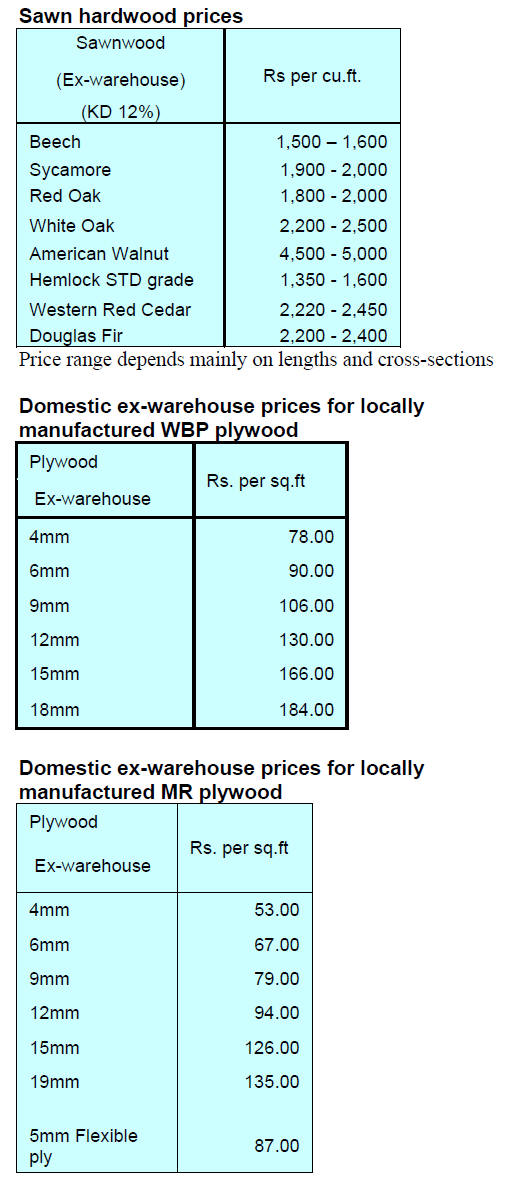
Import cost driven up by weak rupee
The Indian rupee ended 2022 as the worst-performing Asian currency
having fallen 11% against the US dollar, its biggest annual decline since
2013. The rupee is anticipated to weaken against the US dollar in the first
half of 2023 because of concerns about global inflation and the risk to the
Indian economy. However, recovery prospects appear brighter in the second
half as crude oil and other commodity prices should fall.
See:
https://www.compareremit.com/money-transfer-tips/usd-to-inr-forecast-2023/
Falling productivity caused by high temperatures
Extreme heat as well air pollution are a health hazards and a
recent study from the University of Cambridge warns that heatwaves were
weakening India’s efforts to meet its Social Development Goals as extreme
heat could lead to a 15% decline in outdoor working capacity, reduce the
quality of life for up to 480 million people and cost 2.8% of GDP by 2050.
Falling productivity caused by extremely high temperatures could already be
costing India 5.4% of its GDP according to the Climate Transparency Report.
See:https://www.aljazeera.com/news/2023/4/20/indias-heat-putting-economy-development-goals-at-risk-study
and
https://www.climate-transparency.org/
7.
VIETNAM
Wood and Wood Product (W&WP) trade
highlights
Over the first 4 months of 2023 W&WP exports were valued at US$4
billion, down 28.5% against the same period in 2022. In particular, WP
exports contributed at US$2.6 billion, down 36.7% over the same period in
2022.
Vietnam's imports of wood raw material (logs and sawn-wood) in April 2023
is estimated at 432,300 cu.m worth US$155.6 million, up 15.4% in volume and
15.0% in value compared to March 2023.
However, compared to April 2022 imports are down 16% in value and down 22%
in value.
In the first 4 months of 2023, imports of wood raw material reached 1,309
million cu.m, worth US$474 million, down 25.4% in value and down 29% in
value over the same period in 2022.
Vietnam's exports of NTFPs in March 2023 earned US$62.53 million, up 10.4%
compared to February 2023 but down 30% compared to March 2022.
Overall, in the first quarter of 2023 Vietnam's exports of NTFPs amounted to
US$164.95 million, down 37.7% over the same period in 2022.
W&WP exports declining
W&WP exports during April 2023 are forecast to reach US$1.2
billion, up 5.5% compared to March 2023 but down 24.5% compared to April
2022.
WP exports, in particular, are estimated at US$820 million, up 6% compared
to March 2023 but down 28% compared to April 2022. Over the first 4 months
of 2023 W&WP exports are estimated at US$4.0 billion, down 28.5% against the
same period in 2022. Of this, WP exports are estimated at US$2.6 billion,
down 36.7% over the same period in 2022.
With the current growth rate W&WP exports in the first half of 2023 are
predicted to drop around 30% compared to the same period in 2022.
Export categories
In the first 3 months of 2023 wooden frame chairs were the leading
export product, contributing US$593.3 million, year-on-year down 36%;
followed by wood chips reaching US$526.3 million, up 14.6%; living and
dining room furniture US$446.2 million, down 46%; wood-based panels and
flooring US$359.8 million, down 28%; bedroom furniture US$330.6 million,
down 43.4%.
Amongst product categories exported in the first 3 months of 2023, only wood
chips and wood pellets had a positive growth rate.
Export growth of these types of wooden products is due to the increased
demand. However, the expansion of wood chip and pellet exports cannot
compensate for the downturn in the entire sector.
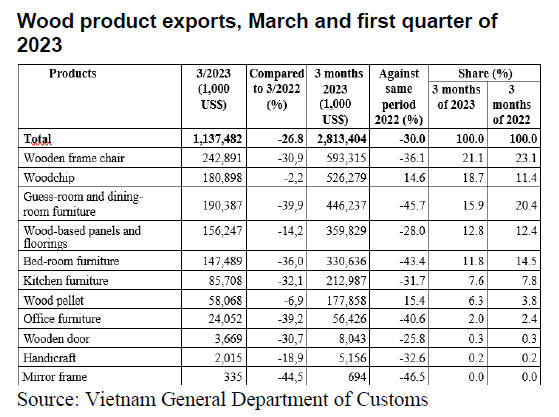
US imports down - Japanese imports up
Since W&WP exports to the US account for around half of the total
W&WP exports the decline in demand in this market led to the serious drop of
total exports in the first 3 months of 2023. Statistics show that in the
first 3 months of 2023 W&WP exports to US were valued at US$1.4 billion,
down 42.3% year-on-year.
The second largest market, Japan, imported W&WPs worth US$428.5 million in
the first quarter of 2023, up 8,8% compared to the same period in 2022.
Against the background of a sharp decline in global demand growth in the
Japanese market is highly appreciated.
However, to boost further the exports to the Japanese market Vietnamese
companies have been advised to create links with Japanese partners to
diversify furniture designs and strengthen trade promotion. W&WP produced in
Vietnam are exported to a number of other markets including China (US$374.2
million, up 6% over the same period in 2022), South Korea (US$207.7 million,
down 17%), EU (US$121.1 million, down 40%); UK (US$41.7 million, down 42%).
Wood sources in the first quarter 2023
Domestic sourcing
In the first 3 months of 2023 the area of newly planted forest
plantations is estimated at 38,700 hectares, up 5% over the same period last
year. Harvested wood volumes reached 3,349,200 cu.m, up 4%.
Imports
According to preliminary statistics, Vietnam's imports of logs and
sawnwood) in April 2023 are forecast at 432,200 cu.m worth US$155.6 million,
up 15.4% in volume and 15.0% in value compared to March 2023;
However, compared to April 2022 imports are forecast to be down by 16% in
volume and 22% in value.
In the first 3 months of 2023 the volume of wood imported from major sources
including the EU, China, USA, Thailand, Laos, Chile and New Zealand declined
year on year while imports of tropical hardwoods from Cambodia, Congo,
Malaysia, Angola and Indonesia increased.
Wood imported from the EU accounted for 14.4% of total wood imports reaching
134,300 cu.m, worth US$40.8 million, down 18% in volume and 20% in value
over the same period in 2022.
Imports of wood from China decreased by 31% in volume and 36% in value over
the same period in 2022, reaching 105,900 cu.m, worth US$51.7 million and
accounted for 11% of total wood imports.
Imports of wood from other markets fell compared to the same period in 2022:
from the US decreased by 7%; Thailand decreased by 25%; Laos decreased by
12%; Chile decreased by 22.7%; New Zealand fell 21%.
In contrast, imports of tropical hardwood from Cameroon increased by 6% in
volume and 10% in value over the same period in 2022, reaching 144,600 cu.m,
worth US$62.6 million and accounting for 16% of total wood imports.
Imports from Congo were up 3%; Malaysia increased by 89%; imports from
Angola increased by 26%; Indonesia increased by 67% and imports from Canada
increased by 17%.
Imported species
In the first 3 months of 2023 the volume of major species imported
into Vietnam, such as tali, pine, ash, oak, rubberwood, teak birch, doussie
and padouk declined compared to the same period in 2022.
Tali dominated imports with a 13% share of total imported wood in the first
3 months of 2023 reaching 121,300 cu.m, worth US$49.6 million, down 7.3% in
volume and 6.7% in value over the same period in 2022.
Pine imports decreased by 51% in volume and 61% in value over the same
period in 2022 (101,300 cu.m, worth US$22.7 million), accounting for 11% of
the total wood imports.
Ash imports decreased by 1% in volume and 12% in value over the same period
in 2022, reaching 86,600 cu.m, worth US$22.3 million.
In addition imports of some other species dropped in the first quarter of
this year (birch decreased by 26%, doussie by 22%, padouk by 8%, eucalypt by
74%, spruce decreased by 35%).
In contrast, oak imports in the first 3 months of 2023 increased by 1% in
volume but decreased by 7% in value over the same period in 2022, reaching
51,800 cu.m, worth US$29.0 million or 5.5% of total imports.
Exporters faced a severe challenge in the first quarter 2023
Vietnam's exports of wood and wood products are faced severe
challenge in the first 3 months of the year with a year-on-year drop of 30%.
To promote W&WP exports, wood businesses have been advised to look for new
customers available in various markets, such as Japan, China, South Korea,
the Middle East rather than just focus on the US and EU markets.
In this recessionary time Vietnamese wood product manufacturers have been
recommended to re-structure production lines, invest in new equipment and
technology to reduce labour costs. They have been advised to increase the
use of supplementary materials, including metal, stone, glass, fabric etc.
to diversify their raw material inputs and increase product aesthetics
towards meeting customer demands.
Fortunately, freight and logistic rates have been significantly reduced
which could help the wood industry in Vietnam regain export momentum from
the third quarter of 2023.
Preparing for the EUDR
The United Nations Development Programme (UNDP) and the Vietnam
Forestry Development Department under the Ministry of Agriculture and Rural
Development, jointly organised an event on deforestation-free agricultural
production and trade.
The workshop was a part of the fourth Global Conference of the One Planet
Network's Sustainable Food Systems Programme. A side event brought together
the experience and expertise of various institutions as well as introduced
case studies of emerging good practice interventions to adapt to the
requirements of deforestation free commodity production and trade.
See:
https://vir.com.vn/deforestation-free-agricultural-production-and-trade-101434.html
8. BRAZIL
Teak in Brazil
Teak (Tectona grandis) plantations have become profitable in the State of
Mato Grosso due to the favorable soil and climatic conditions. Brazil is the
largest teak producer in South America with 88,000 ha. according to the
Brazilian Tree Industry (IBÁ).
Of this total, 77% of the teak plantations are in Mato Grosso State. A
survey carried out by the Mato Grosso Institute of Agricultural Economics
(IMEA) shows that the area of teak forests in the state is around 68,000 ha.
According to a Brazilian company, Teak Resources Co. (TRC) plantation
technology has advanced considerably since the first afforestation efforts.
Productivity has risen and the form of the bole has improved. TRC reports it
has a traceability system and the products are FSC certified.
See:
https://www.canalrural.com.br/mato-grosso/reflorestamento-com-madeira-nobre-e-visto-como-solucao-sustentavel/
African mahogany in Brazil
African mahogany (Khaya Grandifoliola) wood, currently traded
mainly in the domestic market, comes from thinnings. Rough sawn timber is
classified into A+, A, B+ and B according to quality and size.
The measurement of A+ class is over 15 cm in width without defects and
trades at R$4,500.00/cu.m, The A class wood is between 11 cm and 15 cm wide
without defects and is traded at R$ ,800.00/cu.m.
The B+ class wood is over 15 cm in width with defined defects and is traded
at R$2,800.00/cu.m. B class is between 11 cm and 15 cm in width with defects
and traded at R$2,100.00/cu.m. All graded timber is sawn to order and
kiln-dried.
See:
https://abpma.org.br/jornais-abpma-2023/
Export update
In March 2023 Brazilian exports of wood-based products (except pulp
and paper) decreased 19% in value compared to March 2022, from US$423.2
million to US$341.9 million.
Pine sawnwood exports decreased 19% in value between March 2022 (US$73.9
million) and March 2023 (US$60.1 million). In volume, exports decreased 6%
over the same period, from 275,000 cu.m to 258,900 cu.m.
Tropical sawnwood exports fell 38% in volume, from 43,400 cu.m in March 2022
to 27,000 cu.m in March 2023. In value, exports decreased 18% from US$17.9
million to US$14.6 million over the same period.
Pine plywood exports experienced a 22% deline in value in March 2023
compared to March 2022, from US$86.6 million to US$67.5 million.
In volume, exports dropped 0.4% over the same period, from 214,300 cu.m to
213,500 cu.m.
As for tropical plywood, exports decreased in volume by 45% and in value by
44%, from 6,200 cu.m and US$3.2 million in March 2022 to 3,400 cu.m and
US$1.8 million in March 2023.
As for wooden furniture the export value fell from US$59.5 million in March
2022 to US$54.4 million in March 2023, an almost 9% drop.
IBAMA -CITES regulations on ipe and cumaru to be implemented from
2024
Two timber species from the Brazilian Amazon ipę (Handroanthus
spp.) and cumaru (Dipteryx odorata) were included in Appendix II of CITES
(Convention on International Trade in Endangered Species of Wild Flora and
Fauna) in November 2022. IBAMA (Brazilian Institute of Environment and
Renewable Natural Resources) has set November 2024 as the date for
implementing the CITES requirement for the export of these timber species,
thus applying the maximum timeframe allowed by CITES.
Ipę is used to for decks, flooring, furniture and construction and is in
great demand. According to CITES, 469,600 cu.m of ipę from the Amazon were
legally exported between 2017 and 2021, of which 96% from Brazil. During
this period the international consumption of ipę from Brazil grew 126%,
according to IBAMA. The United States is the largest market for ipę
accounting for 36% of exports.
Pará State is the largest exporter of timber from natural forests in Brazil
according to IBGE (Brazilian Institute of Geography and Statistics); 212,000
cu.m of timber were exported between 2020 and 2021, of which 4% was ipę.
For Imaflora (Institute of Agricultural and Forest Management and
Certification), the inclusion of the two species in CITES Appendix II is
important to lower the risk of these species becoming endangered.
See:
https://noticias.uol.com.br/politica/ultimas-noticias/2023/04/08/sob-governo-do-pt-ibama-adia-restricao-a-exportacao-de-madeira-nativa.htm
Furniture exports dropped at the beginning of 2023
Brazilian furniture exports started 2023 with a 25% decline in
January compared to a month earlier. The US$45 million in January 2023
exports were sharply down on the US$68 million exported in January 2022.
The US continues to be the main international market for Brazilian
furniture, US$14.4 million in January 2023 or 32% of all January exports.
Exports to Uruguay, second placed in the ranking of the main importing
countries, grew in 2023.
There are four major export categories in the
sector, wooden furniture, upholstered furniture, metal furniture and
mattresses. Wooden furniture represented 81%, upholstered furniture (12%),
mattresses (4%) and metal furniture (3%). In January this year wooden
furniture exports were down 3% year on year.
See:
https://emobile.com.br/site/industria/exportacoes-de-moveis-e-colchoes-abrem-2023-em-queda/

Through the eyes of industry
The latest GTI report lists the challenges identified by the
private sector in Brazil.
See:
https://www.itto-ggsc.org/static/upload/file/20230414/1681442042214477.pdf
9. PERU
Export shipments of sawnwood up
slightly
Exports of sawnwood in the first two months of this year were worth
US$6.3 million, a slight increase (1.2%) year on year. Sawnwood accounted
for 35% of the value of wood product exports according to the Association of
Exporters (ADEX).
This was the highest amount (January - February period) since 2014 when
exports reached US$10.6 million. In the past five years export shipments
have not been stable, in 2019 they totalled US$3.1 million, in 2020 US$6.1
million, in 2021 US$4.0 million and in 2022 US$6.2 million.
Despite a 26% decline in the value of imports the Dominican Republic was the
top buyer of Peruvian sawnwood importing US$1.9 million in the first two
months of 2023. China was the second destination at US$1.5 million but for
China there was an over 80% increase in the value of shipments year on year.
The other markets were Mexico (US$1.1 million), Ecuador (US$0.61 million),
USA (US$0.30 million), Vietnam (US$0.19 million), South Korea (US$0.15
million), Jamaica (US$0.11 million), Canada (US$0.10 million) and Australia
(US$0.07 million).
In the first two months of the year the main regions from which sawnwood was
exported were Lima (US$2.8 million) and Ucayali (US$2.3 million). These two
regions had a share of 81% of the total shipments. Other exporting regions
were San Martín (US$0.54 million), Madre de Dios (US$0.23 million), Loreto
(US$0.18 million), Junín (US$0.16 million) and Huánuco (US$0.06 million).
New communication tool - the ‘Electronic Box’
A Regulation on the Electronic Box Notification System published on
25 April this year by the Forestry and Wildlife Resources Supervision Agency
(OSINFOR) provided that holders of forest titles will have an individual
account in the ‘Electronic Box’ that will be provided by OSINFOR to
facilitate communications, the sending of alerts and notifications in order
to improve the exchange of documentation and enhance coordination.
According to OSINFOR the ‘Electronic Box’ is a digital tool that will
guarantee the efficiency, confidentiality, authenticity, integrity and
availability of the information sent and received between holders, entities,
the general public and OSINFOR. In addition, it will contribute to saving
time in procedures and other administrative actions both for OSINFOR and for
forest owners and agent as well as other entities related to the sector.
SERFOR works with regional governments to
verify the legality
With the technical assistance of the National Forestry and Wildlife
Service (SERFOR) the regional governments of Madre de Dios, Loreto, Ucayali
San Martín and the Central Forestry and Wildlife Technical Administration
have developed digital tools that will help verify the legal origin of wood.
There are three applications that are part of the Control Module of the
National Forest and Wildlife Information System (MC-SNIFFS), the Issuance
and Registration of Forest Transport Guide, the Electronic Operations Books
of Authorising Titles and the Electronic Operations Books of Primary
Transformation Centers.
The new tools provide a means for recording information on the traceability
of the wood from its origin, tracking the location and movement of forest
products throughout the production chain in order to be able to corroborate
the legal origin and promote competitiveness.
